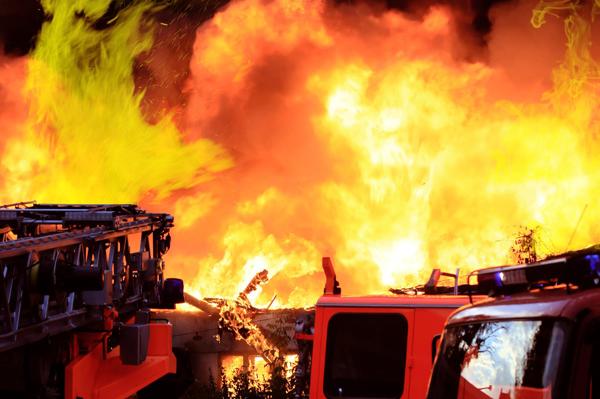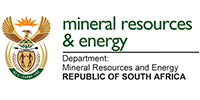South Africa Is Prone To The Outbreak Of Wildfires
South Africa is known for its vulnerability to wildfires. The national climate has dry seasons in Summer and Winter, as well as abundant natural vegetation with sufficient fuel to ignite sparks under the right conditions. When combined, these ingredients can produce significantly dangerous hazards for wildlife and nearby communities. Read this article to discover how wildfire impacts South Africa, and why how you can help by participating in EMCARE’s fire fighting training.
What Is A Wildfire, And Why Do They Happen?
A wildfire is an uncontrolled outbreak of fire that gets exacerbated by flammable, fuel-rich natural vegetation. Wildfires are a natural phenomenon that tends to break out in forests, woodlands and grasslands. South Africa faces regular wildfires as a result of high temperatures and patterns of low rainfall in the dry seasons. Sparks are generally ignited by lightning, the friction caused by falling rocks in the case of mountainous regions like Cape Town, or the results of careless open fires and cigarette stubs being discarded in dry and windy areas.
Causes of Wildfires
- Drought coupled with high temperatures and high winds.
- Lack of firebreaks.
- Criminal arson.
- Negligence or non-compliance with the Veld and Forest Fires Act 101 of 1988.
- Burning waste and rubbish.
- Electric fires caused by faulty power lines in rural areas.
- Discarded cigarette buds.
Effects of Wildfires:
- Job losses for farmers.
- Food insecurity caused by the death of livestock and destruction of cultivated land.
- Destruction of animal habitats.
- Endangerment of wildlife.
- Scarring of agricultural land.
- Loss of critical infrastructure.
- Death and or injury.
- Reduction of biodiversity through the loss of flora and fauna.
- High erosion rates negatively affect irrigation and water availability.
- Reduction of soil fertility.
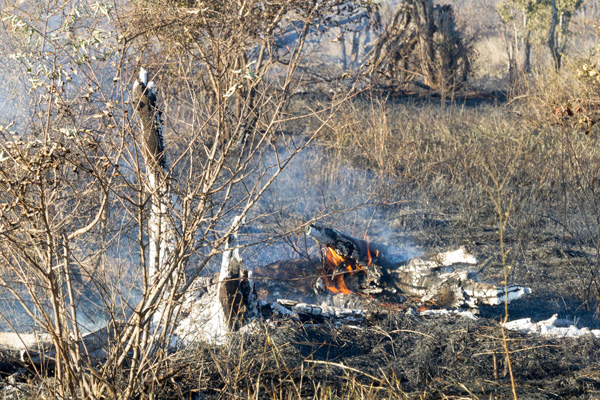
Veld Fires For Controlled Veld Management
Wildfires are also known as veld fires. However, veld fires can also happen purposefully. A veld fire is a strategic tool used by agricultural practitioners to maintain fire-prone ecosystems. In these scenarios, fire is employed as a management tool for the following benefits:
- Vegetation Growth:
Veld fires are an organic way to induce new plant growth. By burning the existing vegetation, veld managers are able to clear the dead litter from the forest floor and make room for new growth. A lot of fynbos plants such as proteas actually require fire to stimulate the release of their seeds and the commencement of their germination and reproduction. Other species rely on fire to remove the competing species that seek to consume scarce natural resources like water and light so that germinating seedlings can thrive instead. - Remove Moribund and Alien Plants:
The Cape Floral Kingdom is an example of an ecosystem that needs to burn every 10 to 20 years in order to flourish. Environmentalists purposely set fire to these ecosystems through contained measures in predetermined areas as a means to eliminate invasive alien species. Non-native plants in South Africa cause huge economic losses, as they diminish scarce water resources and threaten the survival of indigenous species while forcing the government to spend millions on alien species control programmes. - Prevent The Spread Of Plant Disease and Harmful Insects:
The spread of pests like locusts and ticks can pose a serious threat to the resilience and success of farmers’ crops. To avoid the use of harmful pesticides, farmers often use fire as an alternative mechanism to remove bugs from their land. Similar reasons motivate the use of fire to prevent the spread of plant diseases, as controlled fires destroy surface-level, infected vegetation while stimulating new germination and the recycling of existing nutrients. - Salvage Nutrients:
A lot of nutrients is withheld in biomass. Rather than removing plant debris before sowing new seeds and losing their valuable natural minerals, veld managers choose to use fire to recycle the available nutrients. When a plant is burnt, its ashes become a useful source of nourishment that will encourage faster growth for new seeds.
A History Of Recent Fires In South Africa
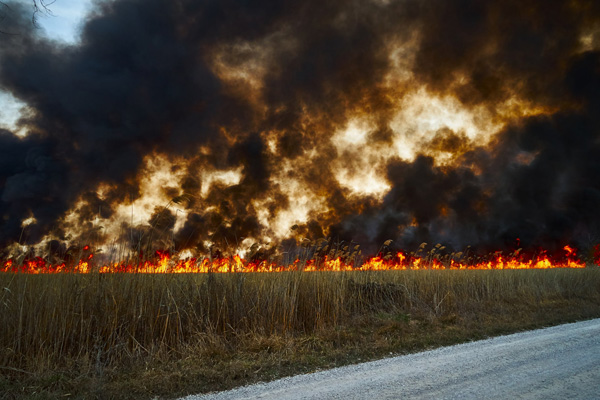
Sub-Saharan Africa is often called the ‘fire continent’ because of its climatic conditions. Nations in this region have tropical and subtropical conditions, as well as woodlands and shrublands that are very susceptible to fire. Veld fires can be incredibly beneficial for the regeneration of an ecosystem. But when veld fires are uncontained they can cause the destruction of landscapes, property and communities, as well as the loss of life.
Cape Town is one of the most fire-prone areas in South Africa, as it faces high wind speeds, drought and it has fire-prone ecosystems such as the Cape Floral Kingdom. Cape Town was recently devastated by wildfires on Table Mountain in April 2021. These fires burnt through 600 hectares of land and 11 buildings, including those situated in the University of Cape Town. These fires caused huge infrastructural damage and were largely attended to by community groups and volunteer firefighters.
In Knysna, June 2017, wildfires swept through the Garden Route in the Southern Cape, destroying a huge amount of land and infrastructure in Knysna. 7 people were killed and 500 houses were damaged alongside 1000 destroyed buildings. Growing population density means that more and more people are settling and residing on the peripheries of urban areas, close to fire-prone vegetation, on the urban-wildlife interface. The threat of wildfires is, therefore, riskier than ever, as ecosystems and human life are now exposed to increased danger.
Nearly 2 million hectares of land were burnt in 2021 in South Africa due to wildfires. Fires broke out in the Free State, Eastern Cape, Kwa-Zulu Natal and neighbouring countries such as Namibia. These fires robbed farmers of their sources of income by killing invaluable livestock and scarring agricultural land. Moreover, severe damage was caused to tribal lands and ecosystems.
Climate Change Creates A Bigger Demand For Volunteers With Experience In Fire Fighting Training
The IPCC’s Sixth Assessment Report of 2021 demonstrates that extreme weather crises are expected to continue as a result of human influence and global warming. Wildfires broke out in California, Australia, Greece, France, American and Turkey in 2021. South Africa can expect temperature increases of 2 to 5 degrees Celsius, which will ultimately lead to longer seasonal droughts that would exacerbate the risk of fire.
With this, comes a greater demand for volunteer firefighters and professional first-responders with fire fighting training. In all of the recent fire crises, brave community volunteers and career firefighters have been at the forefront of the resistance to wildfires. These firefighters have become a vital part of the community as they risk their lives to put a stop to wildfires that endanger ecosystems, communities and critical infrastructure.
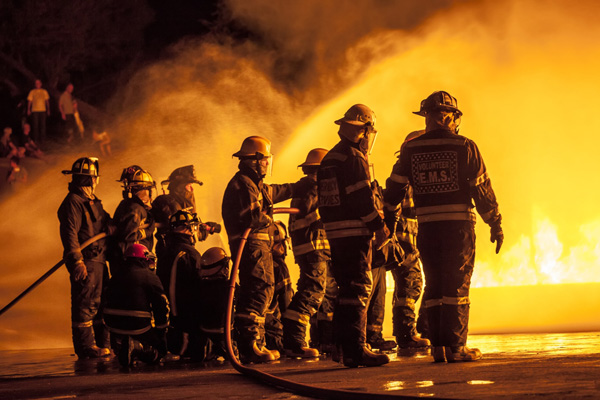
What Are The Requirements To Become A Volunteer Fire Fighter?
Evidently, the risk of fire is a huge issue in South Africa. With this risk, comes a huge demand and call for firefighters who are willing to volunteer their services for the good of the environment and its residents. Taking up fire fighting training is an immense task, and your focus and dedication will constantly be put to the test in life-threatening situations such as veld fires, wildfires, domestic fires, vehicular fires and bush fires etc.
Many people with fire fighting training choose to enter volunteer programmes like Volunteer Wildfire Services or the Reservist Firefighters of the City of Cape Town, or they simply apply to be a volunteer with provincial fire departments. Each of these departments has its own eligibility standards. With EMCARE’s fire fighting training you will need to fulfil the following requirements to become an advanced firefighter or volunteer with the Fire Fighter 1 SP & Hazmat Awareness Course (FF1), a nine-week career course:
- Grade 10
- English proficiency
- Declaration of fitness
- No claustrophobia
- No acrophobia
Most municipal fire departments require firefighters to be between 18 and 45. Before volunteers can graduate from their fire fighting training, they undergo intense drilling in preparation for their fitness declaration tests. Because firefighters are expected to not only respond to outbreaks of fire but also assist in emergencies involving car crashes, infrastructural collapses, drowning, assaults, medical emergencies, and anything involving heights, students in fire fighting training will have to prove that they are capable of undertaking intense physical exercise.
Firefighters are expected to be very fit. Ideally, they should be able to bench press heavy weights around 25 kilograms, run long distances in short durations, carry other people’s body weight on their shoulders, and climb ladders quickly. Other additional bonuses that fire fighting training students will learn through career courses like EMCARE’s FF1 and FF2 is the ability to operate the following equipment and vehicles:
- Vehicles with turntable ladders and hydraulic platforms.
- Water tankers.
- Breathing apparatus vehicles.
- Hazardous materials response vehicles.
- Four-wheel drive vehicles.
- Incident command vehicles.
- Fire hoses.
- Fire streams.
- Rescue tools.
- Personal protective equipment.
- Portable fire extinguishers.
- Ground ladders.
- Ropes and webbing.
- Firefighter personal protective equipment.
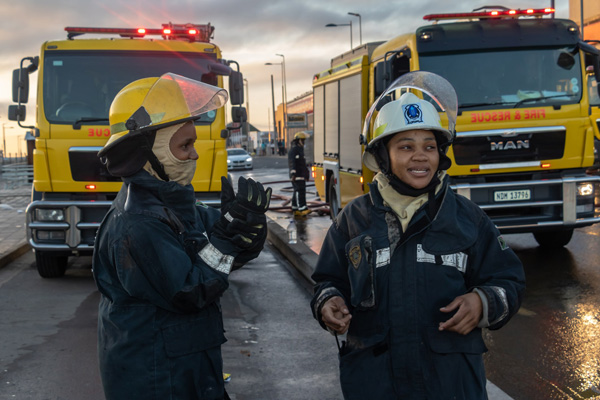
What Are The Responsibilities Of Career And Volunteer Firefighters?
Firefighters are expected to work long hours. While volunteers will mostly be expected to arrive when called, career firefighters could expect to work as many as 60 hours per week. On average, career firefighters can expect to make an average of R196 000 a year. Besides that, volunteers and firefighters will be expected to maintain their physical and mental strength, as the outbreaks of wildfires and any other emergencies can be extremely anxiety-inducing and frightening.
The brave souls who take up firefighting are expected to have excellent discipline, good stress management strategies and advanced communication skills. First response strategies and operations usually involve technical know-how and teamwork under violent or turbulent environments. If a firefighter shows advanced capabilities, then they will have the opportunity to be promoted to higher positions within fire departments, such as platoon commander, station commander, divisional chief, deputy chief and then chief.
What Are The Benefits Of Becoming A Firefighter with EMCARE’s Fire Fighting Training?
- Help your community:
As a first responder, you will be able to make a direct impact on your immediate local community. If you hate feeling helpless in the wake of a crisis, then fire fighting training will give you an opportunity to put your skills to use for the common good. With EMCARE’s courses, you can save lives and enforce safety measures for your fellow South African citizens on a regular basis. - Gain a sense of accomplishment:
Life as a firefighter can be extremely fulfilling, as it is founded on altruism and courage. This line of work has a positive impact on society, and consequently incites a sense of pride. Students who study fire fighting training can expect to feel a strong sense of purpose and direction as they train to become emergency responders. - Prevent wildfires from destroying communities and ecosystems:
In the wake of the climate crisis and extreme weather events, it is vital to prepare for the unpredictable. By training with EMCARE, you can contribute to the mitigation of fire hazards in South Africa. Volunteering as a firefighter or following firefighting training for your career means that you will directly protect your fellow citizens as well as the invaluable ecosystems of South Africa’s beloved, biodiverse landscapes.

